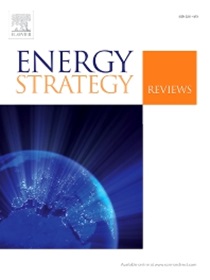毛里求斯电力部门脱碳的途径
IF 7.9
2区 工程技术
Q1 ENERGY & FUELS
引用次数: 0
摘要
提出了一项电力建模研究,以支持毛里求斯电力部门的脱碳。本研究旨在解决的文献空白是,该国电力转型战略中系统建模的证据不足,现有建模研究中的目标过时,长期气候目标有限,以及车辆电气化对电力规划的影响代表性不足。因此,开发了一个技术经济优化模型来探索毛里求斯电力部门的三个长期(2025-2050)情景。情景A反映了当前的政策雄心,与到2030年实现60%的可再生能源发电的国家自主贡献(NDC)目标保持一致。情景B模拟了到2050年实现电力部门净零排放的途径,情景C以情景B为基础,纳入了交通部门的广泛电气化。还探讨了在所有情况下用替代液体燃料转换重质燃料油的潜力。建模使用混合整数线性规划优化工具,即脱碳选项优化(DECO2)。结果表明,如果用生物质代替煤炭,碳排放量将下降近50%。此外,100%的可再生能源电网是可以实现的,替代液体燃料产生约1200至1500千兆瓦时的电力。在净零排放的情况下,只有采用负排放技术(NETs), 28%的电力仍然可以使用燃料油生产。此外,交通电气化对发电能力产生了重大影响。虽然到2050年,模拟系统可以满足电动汽车每年高达400吉瓦时的需求,但在技术之间进行选择的灵活性降低了,并且需要部署昂贵的发电选项。这项电力系统建模研究旨在支持毛里求斯国家电网规划中的政策决策。本文章由计算机程序翻译,如有差异,请以英文原文为准。
Pathways to decarbonise the power sector in Mauritius
An electricity modelling study is presented to support the decarbonisation of the power sector in Mauritius. The gaps in literature that this study aims to address are the insufficient evidence of systematic modelling in the country’s electricity transition strategies, outdated targets in existing modelling studies, limited long-term climate ambitions and the under-representation of the impact of vehicle electrification on electricity planning. Hence, a techno-economic optimisation model is developed to explore three long-term (2025–2050) scenarios in the power sector of Mauritius. Scenario A reflects the current policy ambition, aligning with the Nationally Determined Contribution (NDC) targets of achieving 60 % of renewable energy in the electricity by 2030. Scenario B models a pathway to achieve net-zero emissions in the power sector by 2050 and scenario C builds on Scenario B by incorporating widespread electrification of the transport sector. The potential of switching heavy fuel oils with alternative liquid fuels is also explored in all scenarios. The modelling is conducted using a mixed-integer linear programming optimisation tool, the DECarbonisation Options Optimisation (DECO2). Results indicate that carbon emissions drop by almost 50 % if coal is replaced with biomass. Furthermore, a 100 % renewable energy grid is achievable with alternative liquid fuels generating around 1200 to 1500 GWh of electricity. In the case of net-zero emissions, 28 % of electricity can still be produced using fuel oils only if negative emission technologies (NETs) are deployed. Additionally, the electrification of transport is found to have significantly affected the electricity generation capacity. While the modelled system can meet a demand from electric vehicles of up to 400 GWh per year by the year 2050, the flexibility of choosing between the technologies reduces and expensive generation options need to be deployed. This electricity system modelling study aims at supporting policy decisions in national electricity grid planning in Mauritius.
求助全文
通过发布文献求助,成功后即可免费获取论文全文。
去求助
来源期刊

Energy Strategy Reviews
Energy-Energy (miscellaneous)
CiteScore
12.80
自引率
4.90%
发文量
167
审稿时长
40 weeks
期刊介绍:
Energy Strategy Reviews is a gold open access journal that provides authoritative content on strategic decision-making and vision-sharing related to society''s energy needs.
Energy Strategy Reviews publishes:
• Analyses
• Methodologies
• Case Studies
• Reviews
And by invitation:
• Report Reviews
• Viewpoints
 求助内容:
求助内容: 应助结果提醒方式:
应助结果提醒方式:


